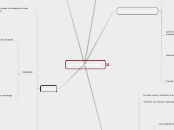CI 5326 chap 3&4
Universal Design for Learning
learning designed for a wider rage of students.
Originally focused on children with disabilities.
6 Principles
Big Ideas
Help students focus on key points ideas.
Conspicuous Strategies
Steps for problem solving or completing tasks.
Subtopic
Temporary help during lesson that leads students to individual practice.
Primed Background knowledge
A past learned skill that students need to complete new assignment.
Strategic Integration
Lessons that lead to high level thinking.
Judicious Review
Review lessons ad apply what they have learned.
English Language Learners
Teacher familiarizes stages for learning English.
Preproduction Stage
Student understands few words
Student does not feel comfortable to speak.
Can last from hours to months.
Early Production Stage
Understand up to 1,000 words
Students able to answer 1 or 2 sentences.
Can last for 6 months or so.
Speech Emergence Stage
Understand up to 3,000 words.
Speak short phrases, simple sentences, & ask simple questions.
Can last up to a year.
Intermediate/ Advanced Language Proficiency Stage
Understand up to 6,000 words.
Make complex statements & express opinions.
Can take up to 5 to 7 years.
Just because student speaks English does not mean they understand academic instruction.
Understandable Presentation
Teach Vocabulary
Small amount of words
Use visual supports
Provide context & activate background knowledge
Use consistent language
Give explanations or directions in a variety of ways
Provide Opportunities for Language Use
Use active participation strategies
Use partner & small-group work
Questions
Provide review, rehearsal, & enrichment of information
Teachers can monitor understanding of information
Types
Convergent& Divergent
Convergent (lower- level thinking)
Basic knowledge& understanding
Teacher looking for one answer.
Divergent (Higher- level thinking)
Problem- solving skills
Teacher wants multiple answers.
High- level& Low- level
Taxonomy
Low-level questions
Knowledge
Comprehension
Application
High- level questions
Analysis
Synthesis
Evaluation
Do not always call on volunteers
Help students connect prior knowledge with new information
English Language Learner questions
Ask questions that can address each language stage
Closing
Review key points
Allow students to draw conclusions
Preview future lessons
Describe when students are able to apply new knowledge
Time for students to show their work
Restate lesson objective
Differentiated Instruction
Using different techniques to teach students.
Provide Options
Content
Teacher flexibility in choosing curriculum topics.
Student readiness
What they already know.
Student interests
Student learning preferences
Process
Students apply what they have learned.
Product
Students will demonstrate what they know.
Ex: Models, presentations, portfolios, & tests.
Opening
An activity before the lesson allows for students to make connections during the lesson.
Strategies
Motivate or focus the students
Explain objective
Purpose of objective activity
Get their attention
Ex: jokes, stories, etc
Show them the steps of the lesson
Provide key idea
Preview Lesson
Provide examples
Help students see relationships between the new knowledge or skill
Connect to prior knowledge
Build Background knowledge
Activate background knowledge by connecting prior knowledge
Create context for learning
Preview upcoming lessons or activites
Show outline of the whole unit
State relationship between objective to long term goal
Connect to other subjects
Present graphic organizer
Responding to Diversity
Look at student background, experience, & prior knowledge
Prerequisite skills or knowledge
Concreteness of the content
Whether this is the 1st lesson
Student interest & motivation
the amount of time available for teaching
